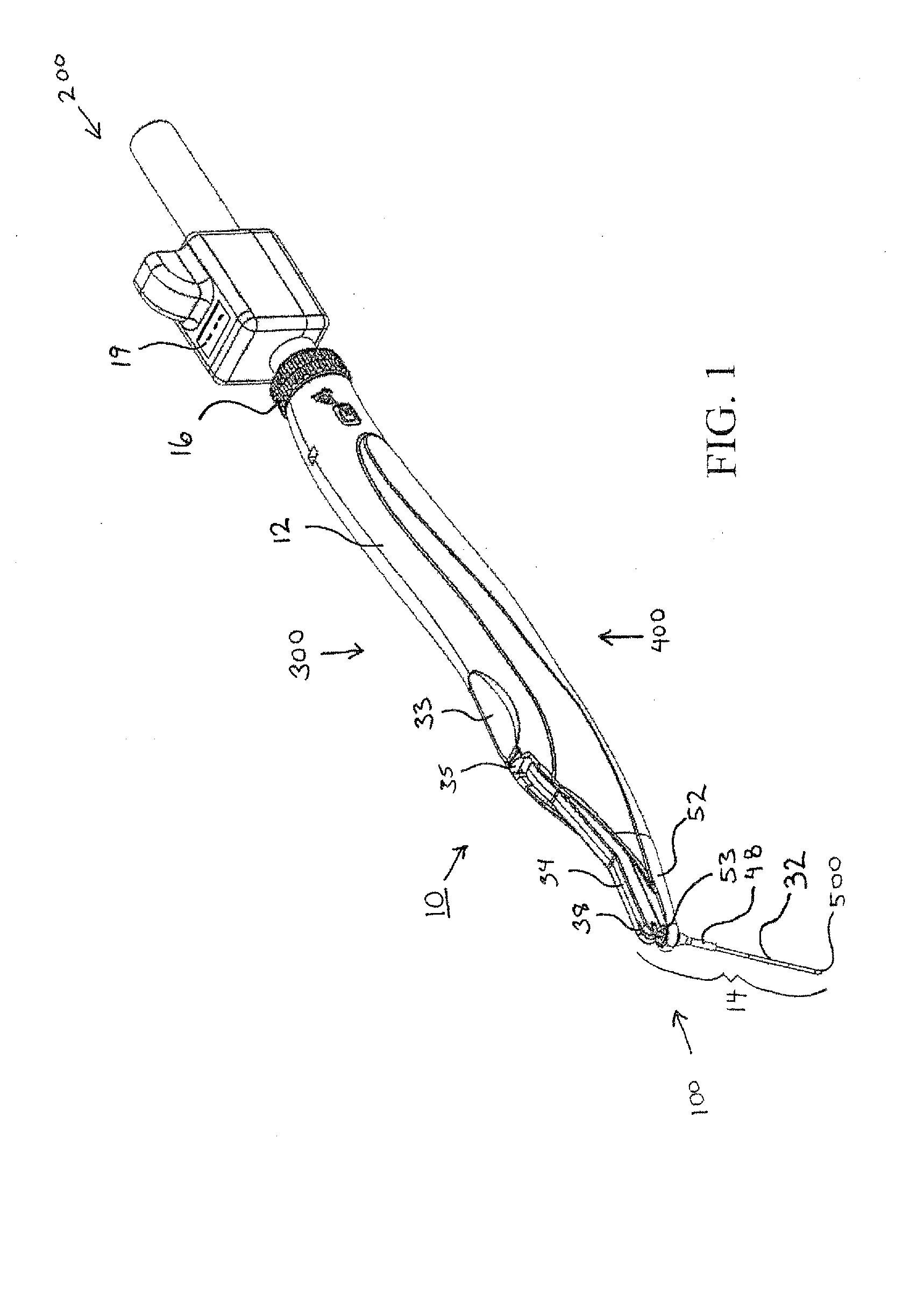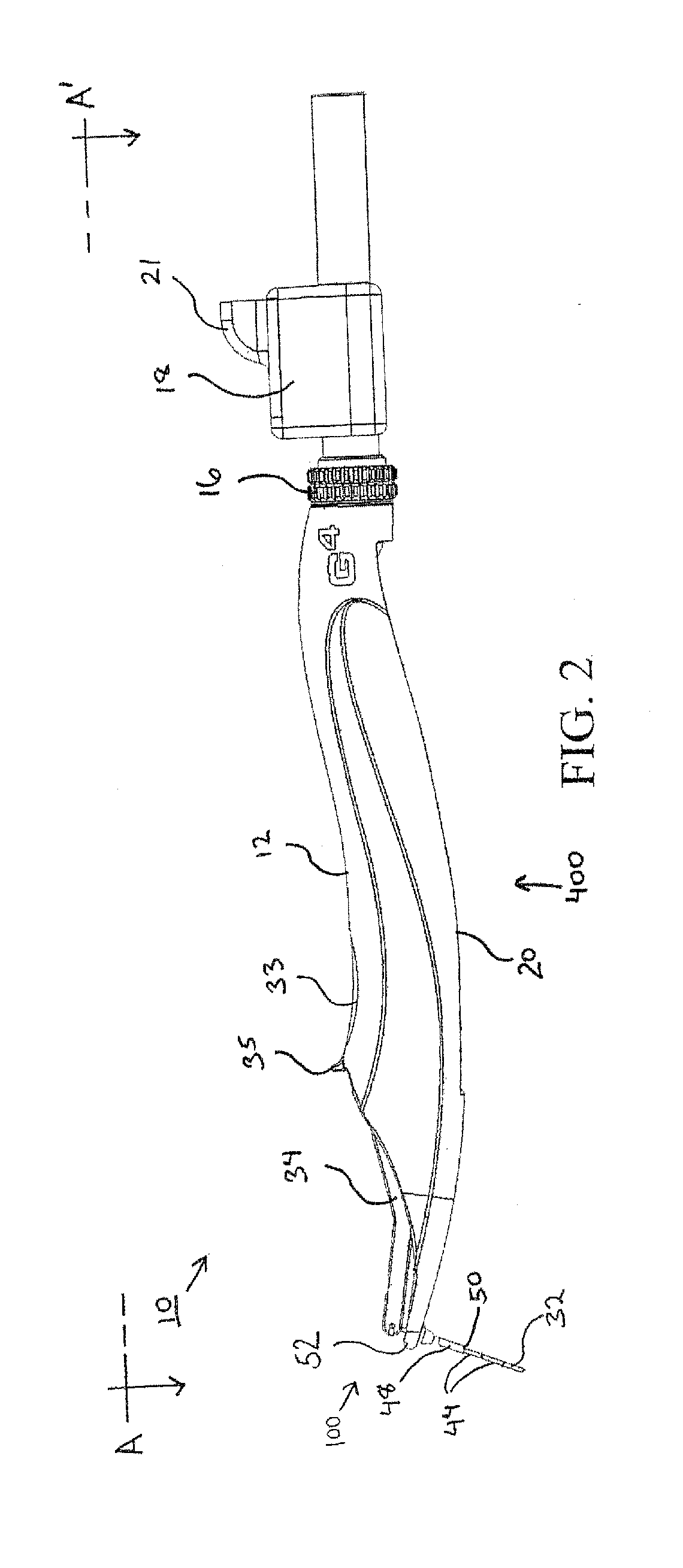Single Use Periodontal Probe
a single-use, periodontal technology, applied in the field of single-use periodontal probes, can solve the problems of affecting the smooth movement of the probe tip, and affecting the accuracy of measuremen
- Summary
- Abstract
- Description
- Claims
- Application Information
AI Technical Summary
Benefits of technology
Problems solved by technology
Method used
Image
Examples
Embodiment Construction
[0037]The subject invention provides depth-measuring periodontal probes and recording apparatus of the type used by dentists to measure the depth of the pocket between the gum and a tooth. The depth of the pocket, also known as gingival sulcus, is measured from the margin of the gum (the top of the gum) to the epithelial attachment (the point where the gum attaches to the tooth), which forms the bottom of the pocket.
[0038]The system of the subject invention provides devices and methods for the diagnosis and / or treatment of periodontal disease. The system includes a single use periodontal probe capable of obtaining consistent measurements, and which eliminates the need for sterilization between uses. The probe can be integrated with a computer so that measurements obtained with the probe can be recorded automatically. In further embodiments, the probe can include mechanisms for the delivery of treatment medicaments at the time of periodontal probing. And in further embodiments, the a...
PUM
 Login to View More
Login to View More Abstract
Description
Claims
Application Information
 Login to View More
Login to View More - R&D
- Intellectual Property
- Life Sciences
- Materials
- Tech Scout
- Unparalleled Data Quality
- Higher Quality Content
- 60% Fewer Hallucinations
Browse by: Latest US Patents, China's latest patents, Technical Efficacy Thesaurus, Application Domain, Technology Topic, Popular Technical Reports.
© 2025 PatSnap. All rights reserved.Legal|Privacy policy|Modern Slavery Act Transparency Statement|Sitemap|About US| Contact US: help@patsnap.com



